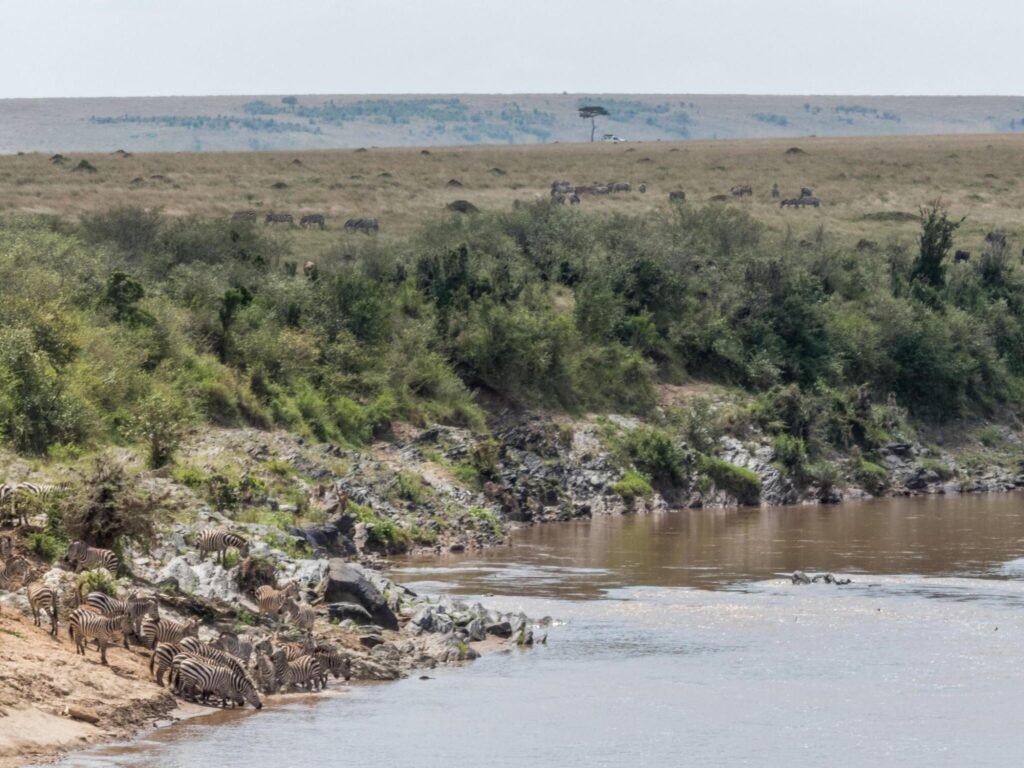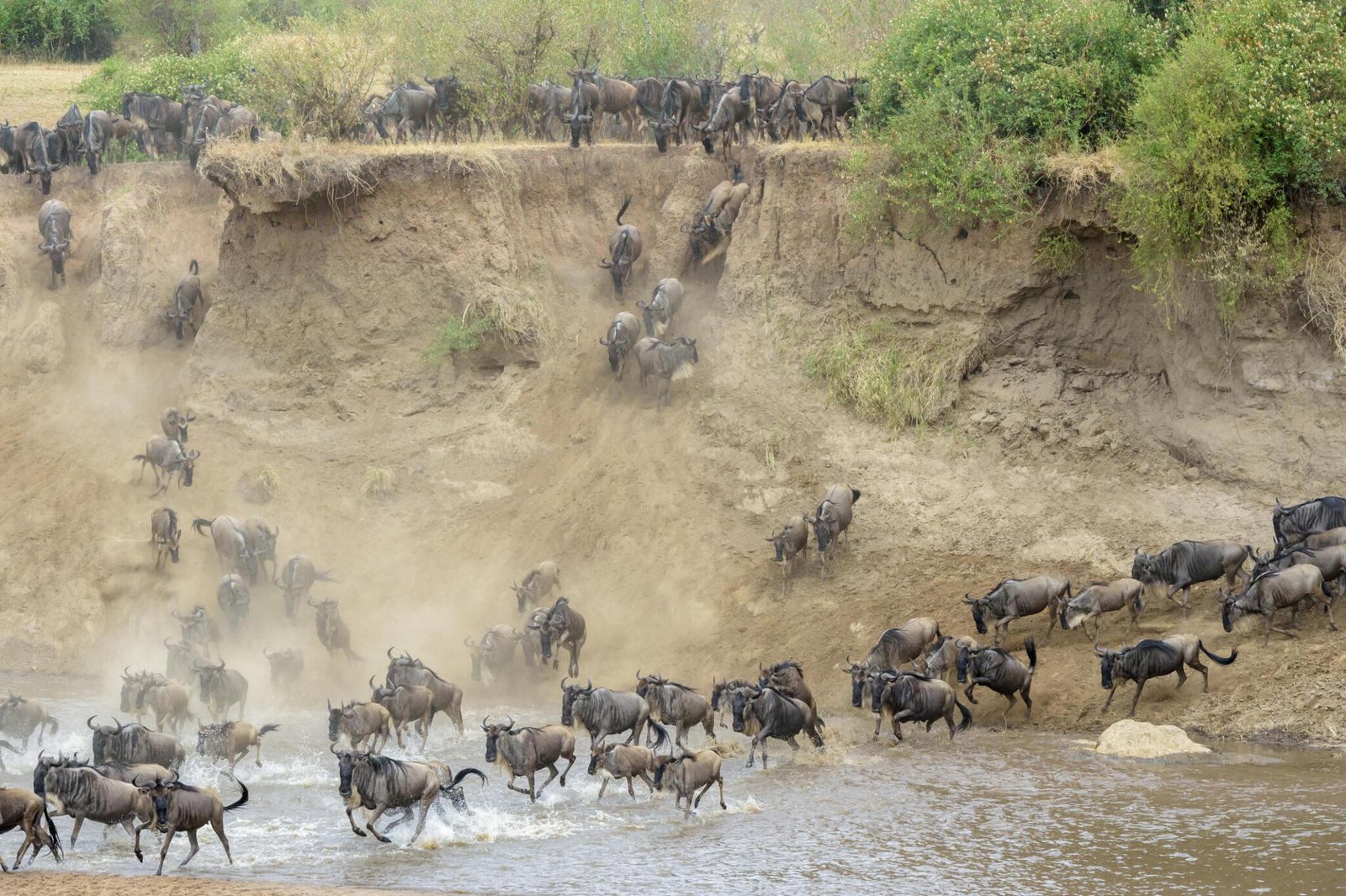Discover all you need to know about the Great Migration, the awe-inspiring natural phenomenon that sees millions of wildebeest and other animals traverse the African savannah. This comprehensive guide covers migration patterns, wildlife, best times to witness the event, and conservation efforts. Get ready for an epic adventure!

The Great Migration is a remarkable and awe-inspiring natural event. That takes place in the vast plains of Africa, captivating the hearts of travelers and nature enthusiasts alike. Every year, millions of wildebeest, zebras, gazelles, and other wildlife embark on an epic journey. Crossing perilous terrains in search of greener pastures. In this article, we will delve into the depths of this extraordinary event, exploring its significance, the animals involved. Best times to witness it, and the conservation efforts to preserve this spectacle for generations to come.
All You Need to Know about the Great Migration
The Great Migration, also known as the Wildebeest Migration, is an annual event that encompasses a cycle of movement covering thousands of kilometers. It is a perpetual journey that ensures the survival of the herds and showcases the marvels of the animal kingdom. Here’s all you need to know about this fascinating phenomenon:
The Migration Route and Patterns
The migration route stretches across the Serengeti National Park in Tanzania and the Maasai Mara National Reserve in Kenya. The journey is primarily influenced by rainfall patterns, as the animals follow the lush green grass. That sprouts after the rains. This cyclical migration creates a spectacle of nature that is unparalleled in its grandeur unveiling the wonders of Tanzania a Safari Adventure beyond Imagination.
The Star Players: Wildebeest, Zebras, and Gazelles
The Great Migration involves several species, but the wildebeest, zebras, and gazelles are the stars of the show. The wildebeest, with their unique appearance and distinctive behavior. Lead the migration, making up the largest portion of the traveling herds. Zebras and gazelles form the supporting cast, creating a harmonious and diverse ecosystem on the move.
The Circle of Life and Predators
The Great Migration is not just about the vast herds moving across the plains. It’s a vivid portrayal of the circle of life all you need to know about the Great Migration. Predators, such as lions, cheetahs, and crocodiles, eagerly await the migration, capitalizing on the opportunity to hunt and feast. The migration becomes a survival game, where only the fittest and swiftest can endure the challenges of the wild.
The Best Times to Witness the Great Migration
If you’re planning to witness the Great Migration, timing is crucial. The migration is an ongoing event that occurs throughout the year. But the specific location of the herds varies depending on the season all you need to know about the Great Migration. Generally, the best times to catch the migration are: The Great Migration: What, When and Where? | The Great Migration is the largest herd movement of animals on the planet. In fact, with up to 1,000 animals per km², the great columns of wildebeest can be seen from space.
- January to March: Witness the calving season in the Serengeti. Where thousands of wildebeest calves are born, attracting predators and offering heartwarming scenes of new life.
- April to June: The herds start moving northwards, crossing the Grumeti and Mara rivers. The river crossings are both thrilling and dangerous, as crocodiles lurk beneath the waters.
- July to September: The wildebeest gather in the Maasai Mara, with the dramatic river crossings at their peak. This is considered the best time to witness the migration.
- October to December: The herds head back to the Serengeti, completing the circle and preparing for the calving season once more.
The Role of Weather and Climate Change
The Great Migration is intrinsically linked to weather patterns, particularly the rains that trigger the movement. However, in recent years, climate change has posed significant challenges to this delicate balance. Erratic weather patterns, prolonged droughts, and human encroachment have affected the migration, making conservation efforts more critical than ever.
Conservation and Preservation Efforts
Preserving the Great Migration and the fragile ecosystem it supports is of paramount importance all you need to know about the Great Migration. Several organizations and governments are actively involved in conservation efforts. Initiatives include establishing protected areas, anti-poaching measures, and community involvement to promote sustainable tourism and preserve the migration for future generations.
How long does the Great Migration last?
The Great Migration is an ongoing, cyclical event that lasts throughout the year. The herds move in a continuous loop between the Serengeti and Maasai Mara. With specific locations varying depending on the season.
What dangers do the animals face during the migration?
The animals face various dangers during the migration, including predators. Such as lions and crocodiles during river crossings all you need to know about the Great Migration. Additionally, they encounter natural obstacles like harsh weather conditions and disease outbreaks.
Can tourists witness the Great Migration up close?
Yes, tourists can witness the Great Migration up close. By visiting the Serengeti National Park in Tanzania and the Maasai Mara National Reserve in Kenya. Experienced guides offer safari tours that provide opportunities to witness the migration’s most thrilling moments.
How do climate change and human activities impact the migration?
Climate change and human activities pose significant threats to the Great Migration. All You Need to Know About the Great Migration. Erratic weather patterns and prolonged droughts affect the availability of food and water. While human encroachment disrupts the natural habitats and migration routes.
Are there any specific safety guidelines for tourists during the migration?
Tourists visiting the migration areas must follow safety guidelines to ensure both their safety and the well-being of the animals. All You Need to Know About the Great Migration. Guides instruct visitors to maintain a safe distance from the wildlife and refrain from any disruptive behavior.
Can the Great Migration be witnessed from hot air balloons?
Yes, witnessing the Great Migration from a hot air balloon is a popular and exhilarating option. All You Need to Know About the Great Migration. Balloon safaris provide a unique and breathtaking perspective of the vast herds and the stunning African landscape.

